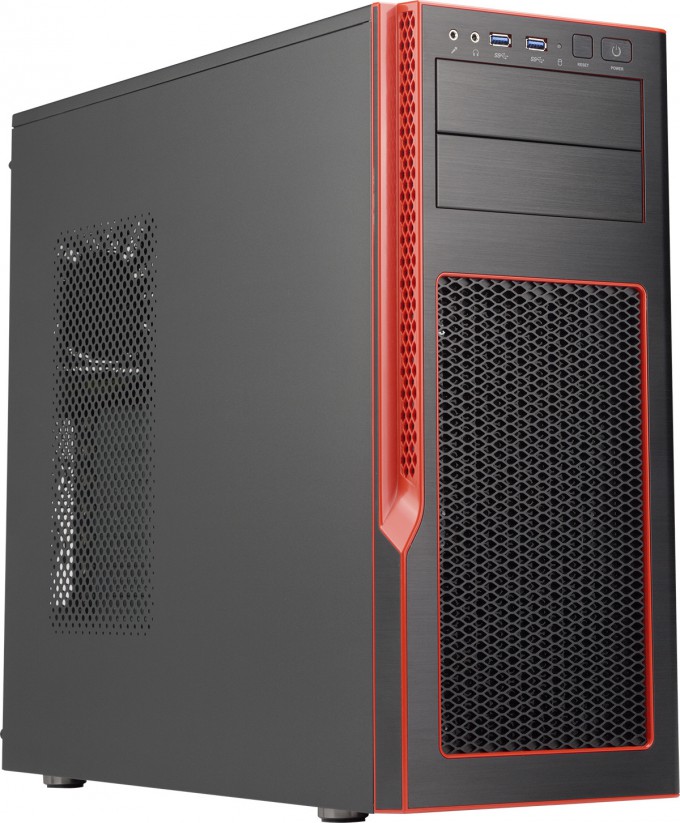- Qualcomm Launches Snapdragon 4 Gen 2 Mobile Platform
- AMD Launches Ryzen PRO 7000 Series Mobile & Desktop Platform
- Intel Launches Sleek Single-Slot Arc Pro A60 Workstation Graphics Card
- NVIDIA Announces Latest Ada Lovelace Additions: GeForce RTX 4060 Ti & RTX 4060
- Maxon Redshift With AMD Radeon GPU Rendering Support Now Available
Needs Polish: A Review Of The Supermicro S5 Gaming Mid-tower Chassis

Unless you buy server motherboards and proprietary systems, you may not have heard of Supermicro before. With its S5 Gaming mid-tower PC chassis, the company is showing signs of diversifying its market reach. Techgage got a sample, so we put it through the wringer to see just how good it is.
Page 3 – Final Thoughts
Supermicro uses its S5 for its own proprietary systems, so until a couple of months ago the only way to get a hold of one was to buy a PC from the company.
There is much to like about the S5, but let’s cut to the chase: It will never be mistaken for a premium offering. It just needs too much polish as it is right now.
Let’s start with its good points, though. Its looks are stylish, if a bit generic and corporate. The red trim and asymmetrical details give it just enough character to save it from being banal and just plain boring.
I also love the captured thumbscrews on the side panels. That might sound a bit strange to praise something as small as thumbscrews, but it’s details like this that make a design better over other existing solutions. Mind you, Supermicro isn’t the first chassis manufacturer to have done this; I just think that more chassis makers should.
This chassis’ capacity for storage drives is also impressive. Twelve storage devices (plus two optical drives) is quite a feat for a chassis this size.
Unfortunately, the S5 has a list of shortcomings that lets it down somewhat. First, the cable management openings on the motherboard tray are almost too small. Here is how this is a problem: You’d have to contort your PSU’s 24-pin motherboard power connector to make it go through the openings. Some PSU cables are too stiff to allow the connector to go in sideways or even at an angle, so your only other option in such a case is to not use the openings in the motherboard tray. This will annoy cable management fetishists.
Another issue is the magnetized mesh filter covering the chassis roof. The fineness of the mesh will keep dust out of the chassis, but it will also impact airflow through this part of the chassis. If you have fans/radiators mounted up there, that impact would be negative.
Now that I’ve mentioned it, the S5 isn’t what I’d call a radiator-friendly design. While you can install a120/140/240/280mm radiator on the roof, you can only put thin ones up there. Users with thick radiators can mount them in the front intake position, but only if 1) you remove all of the drive cages, and 2) the radiator doesn’t exceed 240mm in length. As a compromise solution, it’s far less than ideal.
So what do we make of the Supermicro S5? It’s a solid offering, but it needs a good bit of refinement to be outstanding. For one thing, I think it needs to be a little bigger. Water cooling is an increasingly popular cooling option for system builders, and thicker radiators tend to be more efficient. The S5 is too restricted in this regard.
Speaking of restrictions, I think the S5 will perform better in the cooling stakes if Supermicro used a less restrictive mesh on the roof vents. This is a fairly easy fix, so if the company decides to update the S5 for better performance, this is one way to do it.
Another easy way would be to execute the cable management details more intelligently. Increasing the size of the cable management holes is an easy way to accomplish this.
Finally, I’d be more enthused with this chassis if the plastic used was a higher-quality specification. Especially given the $99.99 asking price (though some e-tailers, notably Newegg, is selling it for $94.99 at the time of writing), I’d feel much better if it was made of better materials.
Pros
- Good structural integrity.
- Resilient paint.
- Huge capacity for storage drives.
- Intelligent details (captured thumbscrews on side panels).
- Price.
Cons
- Cheap-feeling plastic.
- Size inhibits radiator compatibility.
- Cable management features need improvement.
Support our efforts! With ad revenue at an all-time low for written websites, we're relying more than ever on reader support to help us continue putting so much effort into this type of content. You can support us by becoming a Patron, or by using our Amazon shopping affiliate links listed through our articles. Thanks for your support!





